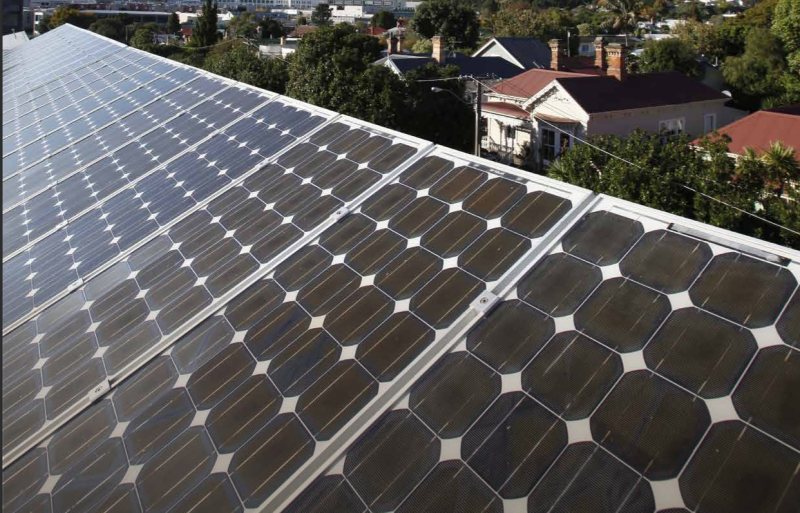
Image source : Greenpeace
Greenpeace has a plan that would put solar and storage on half a million New Zealand homes over the next decade – supported by diverting cash spent on subsidies for the oil and gas industry.
The plan, called Solarise New Zealand, would see Government-provided interest free loans for solar panels and battery systems, with additional support for 100,000 lower incomes households in the form of a grant that would cover at least half the cost of installing a system.
“By installing 500,000 batteries in homes, we can ensure that energy is stored when it’s most abundant, and then deployed when it’s most needed,” said Greenpeace climate and energy campaigner, Amanda Larsson. “This reduces the enormous cost of building more local distribution and transmission lines to meet demand at peak times.”
Greenpeace states if implemented, the scheme would see 1.5 GW of new solar power capacity rolled out and “3 GW” of battery storage added to New Zealand’s electricity grid over the next decade. That means the systems would only be 3kW each and as for the “3GW” of storage, it’s not clear if the organisation meant gigawatt-hours (GWh) instead of gigawatts (GW) – but throughout the Solarise New Zealand plan it mentions kW/GW in relation to storage.
Regardless, it’s a lot of solar for a country of ~4.7 million, a lot of batteries and a lot of loans.
The zero interest loans would be associated with the house rather than the individuals who own or rent it and the organisation suggests the program could be administered through regional councils, paid back via rates. This sort of arrangement has been quite successful in Australia.
Greenpeace envisions funding for the program would come from the $78m to $88m a year of public money currently spent on subsidies for the oil and gas industry. No doubt NZ’s oil/gas sectors will have something to say about that – they are still cranky over the announcement by NZ PM Jacinda Arden in April this year that no further offshore oil and gas exploration permits will be issued.
Clean Energy Beyond The Electricity Sector
Jacinda Ardern has previously committed to 100% renewable energy by 2035 and net zero carbon emissions in New Zealand by 2050. The Kiwis don’t have far to go in terms of the renewables goal – in 2016, close to 85% of electricity generation in the country was from renewable resources; mainly hydro, geothermal and wind.
However, Greenpeace argues that electricity only provides a quarter of the country’s energy needs, with as much as 60% of it still coming from fuels including oil, gas and coal.
“The reality of climate change means we have to rapidly achieve not just 100% clean electricity, but 100% clean energy. That means shifting our transport system to clean electricity instead of dirty oil.”
Helping to charge electric vehicles would be home solar, which has been treated as a poor cousin by some energy companies in the country.
The Solarise New Zealand proposal can be viewed here and a related discussion paper that discusses New Zealand’s current energy climate, its challenges and recommended solutions, here.

 RSS - Posts
RSS - Posts



I want to know why I am being prohibited from posting.